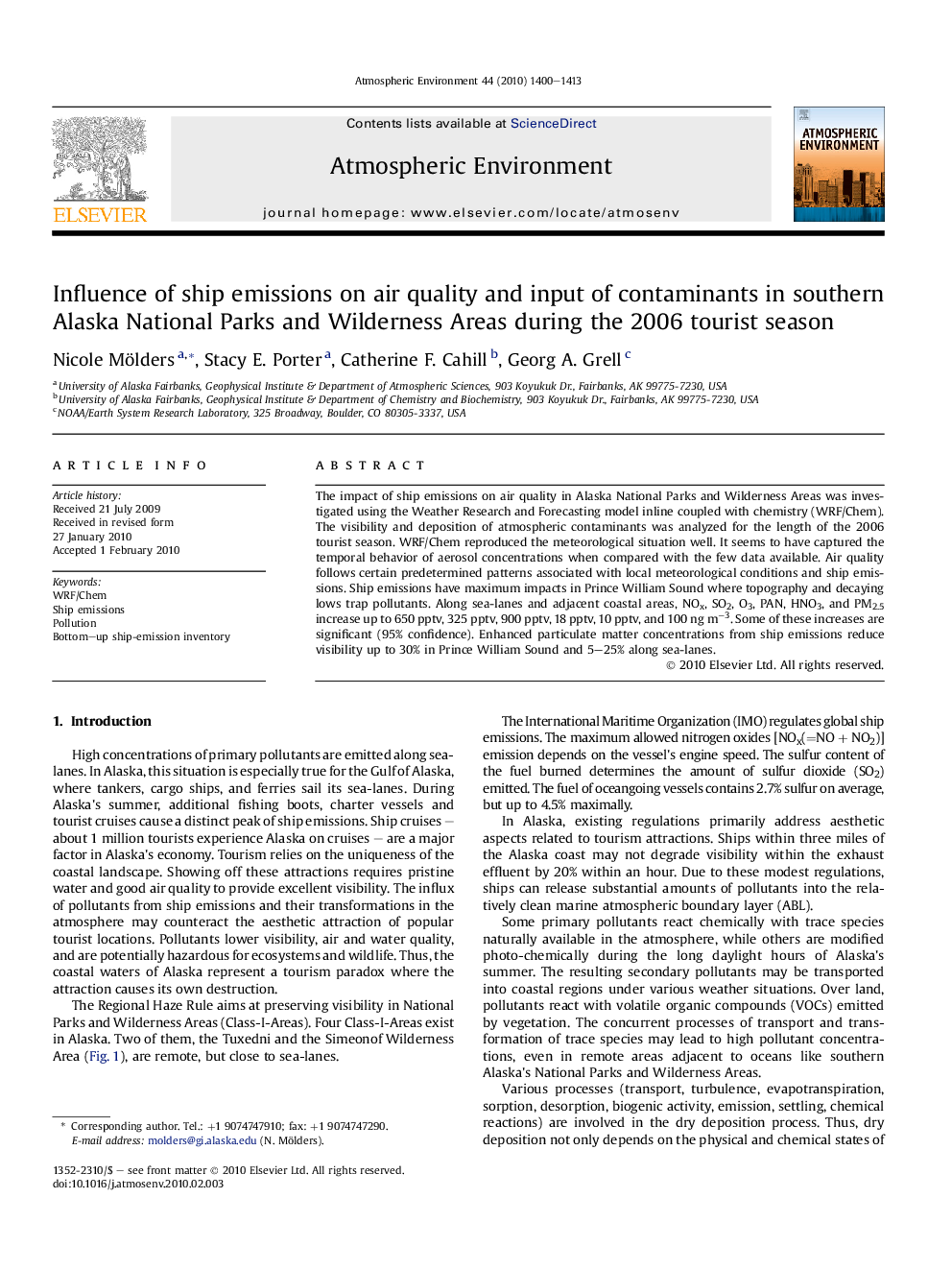| Article ID | Journal | Published Year | Pages | File Type |
|---|---|---|---|---|
| 4440973 | Atmospheric Environment | 2010 | 14 Pages |
The impact of ship emissions on air quality in Alaska National Parks and Wilderness Areas was investigated using the Weather Research and Forecasting model inline coupled with chemistry (WRF/Chem). The visibility and deposition of atmospheric contaminants was analyzed for the length of the 2006 tourist season. WRF/Chem reproduced the meteorological situation well. It seems to have captured the temporal behavior of aerosol concentrations when compared with the few data available. Air quality follows certain predetermined patterns associated with local meteorological conditions and ship emissions. Ship emissions have maximum impacts in Prince William Sound where topography and decaying lows trap pollutants. Along sea-lanes and adjacent coastal areas, NOx, SO2, O3, PAN, HNO3, and PM2.5 increase up to 650 pptv, 325 pptv, 900 pptv, 18 pptv, 10 pptv, and 100 ng m−3. Some of these increases are significant (95% confidence). Enhanced particulate matter concentrations from ship emissions reduce visibility up to 30% in Prince William Sound and 5–25% along sea-lanes.
